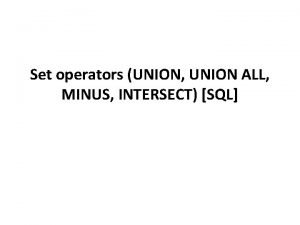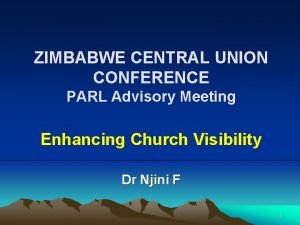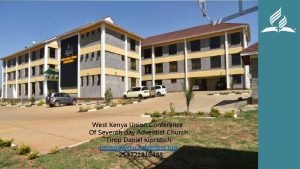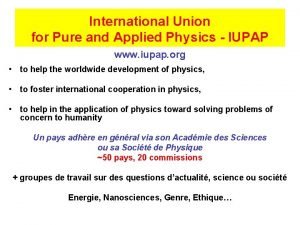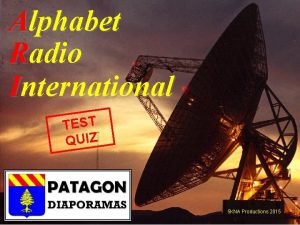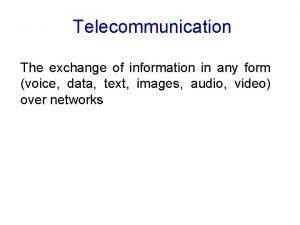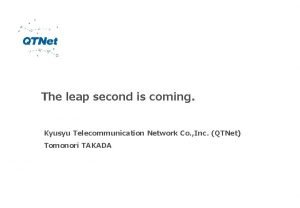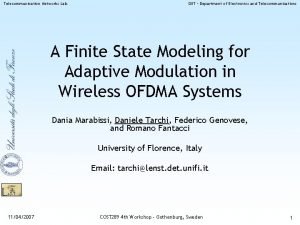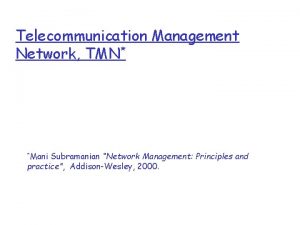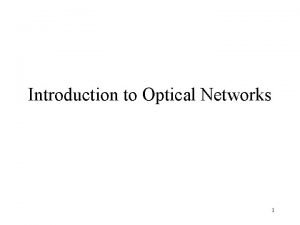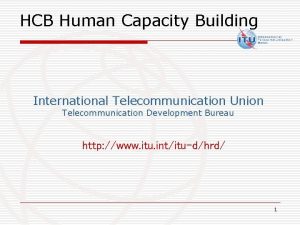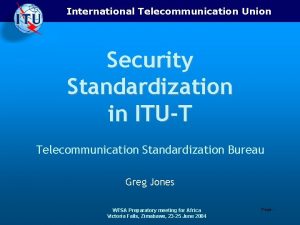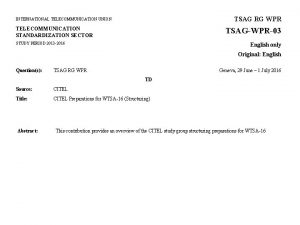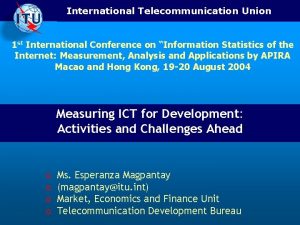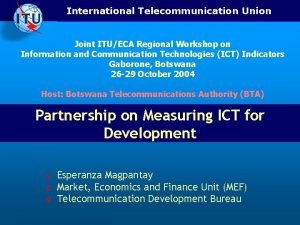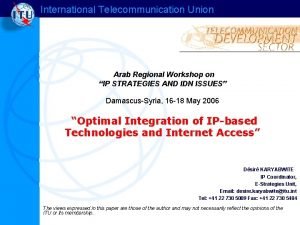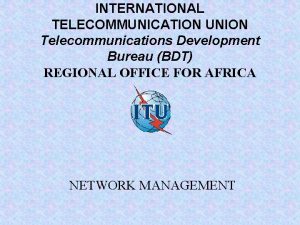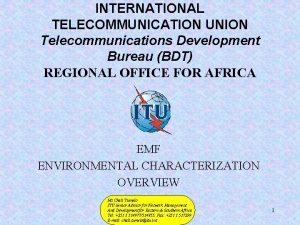International Telecommunication Union Regional Radio Conference and the

















- Slides: 17

International Telecommunication Union Regional Radio Conference and the EGEE grid Andrea Manara ITU-Radiocommunication Bureau Terrestrial Service Department EGEE ’ 06, 26/09/2006

Summary n International Telecommunication Union (ITU) and the Radiocommunication Bureau (ITU-BR) n Regional Radio Conference RRC-04/06 n The data and the planning process n The computational problem n The ITU-BR distributed computing system n Experience with the EGEE grid n Experience with Diane and Mon. ALISA

The International Telecommunication Union (ITU) ITU: oldest UN agency (17 May 1865) history n Telecommunication Standardization Sector (ITU-T) • Production of standards covering all fields of telecommunications ITU-T/OGF Workshop on Next Generation Networks and Grids (23 -24/10) n Telecommunication Development Sector (ITU-D) · Assists the Member States in development of their telecommunication infrastructures n Radiocommunication Sector (ITU-R) • Management of the radio-frequency spectrum and satellite orbits for fixed, mobile, broadcasting and many other communication services

ITU-BR RRC-04/06 n n Regional Radio Conference for the introduction of digital broadcasting in the UHF (470 -862 MHz) and VHF (174 -230 MHz) bands. RRC-04 (May 2004, 95 countries) established the technical basis (planning criteria and parameters) for the RRC-06 and defined the work for the intersessional activities Amongst the intersessional activities: • First planning exercise (28/02/05 -> 15/07/05) • Second planning exercise (31/10/05 -> 28/02/06): Draft Plan RRC-06 (15 May– 16 June 2006) established the new frequency plan in Geneva (120 countries, > 1000 delegates). This plan is part of a new international agreement.

The data n Digital broadcasting requirements (~70 K) • T-DAB and DVB-T : many system variants (i. e. data capacity/reception modes) ->Reference Planning Configurations • Assignments (location and features of transmitter known) • Allotments (service area known) -> Reference Networks (number, location, power of transmitters) to approx. real networks n n n Existing and planned analogue television stations (~95 K) Existing and planned fixed and mobile stations (~10 K) Administrative declarations ( several millions)

The Planning process Planning based on the protection of service area for assignments and allotments n Compatibility analysis(*) • D 2 d, d 2 o-o 2 d For each digital requirement : n n n List of available channels List of incompatibilities Synthesis • Determine a suitable frequency for each requirement n n n to maximize the number of requirements satisfied to avoid harmful interference Complementary analysis(*) • Determine which analogue assignments may suffer interference from the implementation of a given digital assignment or allotment (*)Suitable to be run on a distributed infrastructure Planning software experts: • K. Hunt • T. O’Leary n. Propagation model for field strength prediction: ITU-R P. 1546 -1 (statistical model) Four iterations at RRC 06 during week-ends

RRC 06 outcome: GE 06 Plans and related agreements • Digital plan • Analogue plan(*) • Rules for modifications to the Plans and for coordination of other primary services (Art. 4) • List of other primary services • Rules for notification of frequency assignments (Art. 5) (*)Transition period from analogue to digital broadcasting (17 June 2015 for most adm. ) Requirements satisfied (%) VHF UHF Iter 1 64% 74% Iter 2 73% 85% Iter 3 84% 94% Iter 4 93% 98% The percentage of requirements satisfied increased at RRC 06 as Member States negotiated and formulated more compatible requirements. ST 61 (Europe) GE 89 (Africa) GE 06

The computational problem Running compatibility and complementary analysis very CPU-intensive n Very limited time to perform the calculation at the RRC 06 • Full scale calculation in < 1 day • Smaller parallel regional area (CNG) runs during the week First planning exercise (06/2005) • CPU time: 90 days • Elapsed time: > 1 week! n After the first planning exercise: • Look for more resources in BR • Look for resources in EGEE d 2 d. UHF Jobs: 428 CPU time: 1300 hours First Planning Exercise ~20 1 -2 GHz Desktop PCs 6 dedicated 3 GHz PCs Safety for the RRC 06: 2 independent systems

BR distributed computing system ITU-BR developed system • Client-Server system • Windows services, Perl • UDP, XML-RPC • . NET C# GUI • Data deployment (~300 MB) at client service start up (~15 m. ) • MD 5 checksum • Easily scalable Credits : J. Boursy (ITU-R) 84 3. 6 GHz PCs farm 168 parallel jobs (hyper-thread) Thanks to ITU-IS: • infrastructure set-up (T. Arnold) • support (S. Manandhar, J. Bhandary) ITU cluster Montbrillant

BR distributed computing system Run ID T Int (h) T Elaps(h) Jobs(#) Iter 1_1 752 6. 1 18053 Iter 1_2 621 5. 9 26419 Iter 1_2% 591 5. 0 22085 Iter 1_compl 415 3. 0 17000 Iter 2 463 4. 1 22935 Iter 2_compl 406 3. 0 18984 Iter 3 300 3. 4 22935 Iter 3_compl 361 2. 8 4782 Iter 4 205 2. 6 21100 Iter 4_compl 373 3. 0 4774 4487 38. 9 179067 RRC 06: 6. 2 months running time ~180 K jobs run!!!

Experience with the EGEE grid The work plan n Technical kick-off meeting at CERN ( Oct. 21, 2005) n Feasibility studies and implementation (Oct. , Nov. 2005) n Tests and refinements (Jan. -Apr. 2006) n Verification of results quality (porting): • Direct submission to the Grid too much overhead! • Diane master-worker system to optimise the usage of resources • Result files comparison between EGEE (Linux) and ITU (Windows) resources • Full-scale test with Draft Plan data (Feb. 2006), ~30 k jobs Grid Infrastructure n New virtual organization (GEAR, 300+ CPUs) n Safety-> Extra Redundancy • 3 UIs: 2 at CERN(both used), 1 in Madrid (not used) • 2 dedicated RBs: all used

Experience with EGEE grid Software Distribution n Tarball installation in the site software area (~350 MB, soft. + data, Md 5 checksum) CERN responsibilities: n n n Consulting in GRID technologies Online support before and during the Conference Preparation of scripts for easy operation of the GRID by ITU personnel ITU responsibilities: n n Providing tarball Operation of the system Participating institutions • CERN • INFN-CNAF Bologna (+ sites of Grid. IT infrastructure) • PIC Barcelona, CNB Madrid • DESY (Hamburg, Zeuthen) • Cyfronet Krakow • Moscow State University

Experience with EGEE grid n Diane operational modes startup overhead (submission) • active n n start submitting jobs to EGEE when the software is ready and installed conserving resources but larger latency • inactive n n submit jobs to EGEE in advance and wait until the software is ready and installed jobs are idling but response time is faster (K. Moscicki poster n. 228 User Level Scheduling for improved Quality of Service in the Grid ) transient network problem or worker crash Diane Applications 1) Data Analysis in High Energy Physics (Atlas) 2) Geant 4 Simulation in Low Energy Physics (e. g. medical apps, radioprotection, small detectors on spacecrafts) tail effects: CPU / task length differences Source: J. Moscicki EGEE-II INFSO-RI-03 1688 3) Geant 4 Regression Testing 4) Bioinformatics (BLAST, Autodock) e. g. Avian Flu Drug Search (see presentation on EGEE conference by H. C. LEE)

System Integration Two complementary systems: -Dedicated resources for fast response -EGEE grid for maximum performance -We have demonstrated the possibility of a seamless integration (could be interesting for other applications) MONitoring Agents using a Large Integrated Services Architecture (Monalisa) • Ap. Mon Perl module to send UDP packets to the Mon. ALISA service • 2 ITU clusters monitored with EGEE GRID sites!

Conclusion n n A key ingredient for the success of the ITU Regional Radio Conference RRC-06 has been the capability of performing complex calculations in a very limited amount of time. Two independent distributed systems have been used at the RRC-06 Conference • • n The ITU-BR system on a local cluster EGEE infrastructure EGEE insured adequate support for an important CPUintensive international event and opened the possibility to allow faster and more detailed studies during the Conference

Conclusion n EGEE: 'on demand' Grid computing for the ITU-RRC 06 n EGEE guaranteed safety for the RRC 06: cross-checking results n User Level Scheduling EGEE Grid with Diane allowed successful run of ITU application (high Qo. S requirements) n n ITU: new user community integrated very quickly into the grid (ITU staff was trained to be autonomous in a short time) ITU personnel performed most of the operations (but required often expert support)

Acknowledgment CERN: K. Moscicki, P. Mendez, A. Muraru, M. Lamanna ITU-BR: D. Botha, M. Cosic, T. Gavrilov, P. Hai, A. Manara Press releases: • Digital broadcasting set to transform communication landscape by 2015 • EGEE helps achieve international digital broadcasting agreement
 Union union all intersect
Union union all intersect Nacada region 9
Nacada region 9 Zimbabwe central union conference
Zimbabwe central union conference North west kenya conference
North west kenya conference International union of pure and applied physics
International union of pure and applied physics Trunking vs conventional radio system
Trunking vs conventional radio system Difference between telecommunication and data communication
Difference between telecommunication and data communication International union of forest research organizations
International union of forest research organizations Alphabet radio otan
Alphabet radio otan Telecommunications project management
Telecommunications project management Objectives of telecommunication
Objectives of telecommunication Types of telecommunication networks
Types of telecommunication networks What is telecommunication network
What is telecommunication network Kyushu telecommunication network co.,inc.
Kyushu telecommunication network co.,inc. Telecommunication
Telecommunication Telecommunication network management
Telecommunication network management The swift society
The swift society Telecommunication network architecture
Telecommunication network architecture
